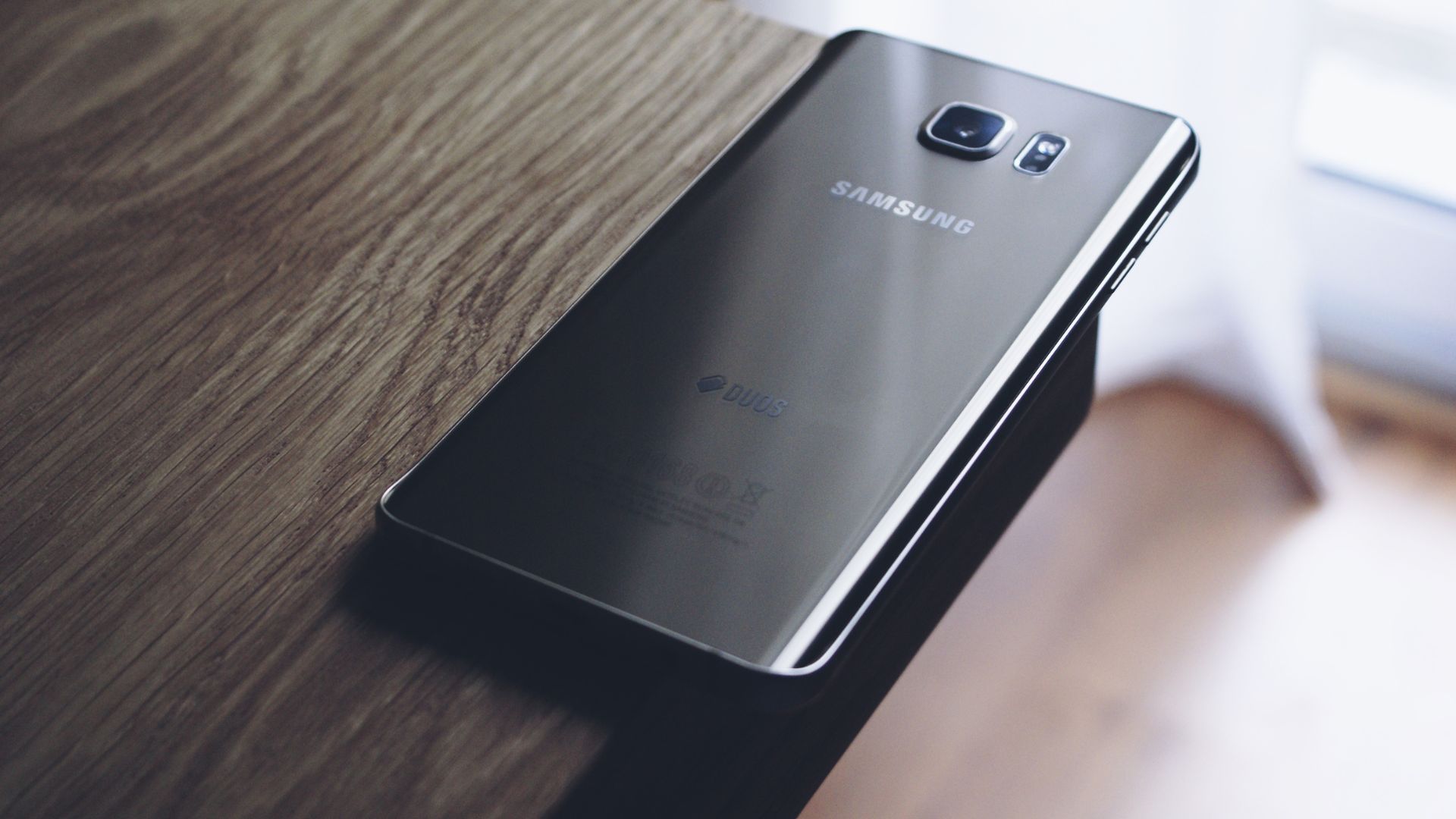Okay, this is Xiaomi’s biggest, most hyped flagship, the Xiaomi 14 Ultra, and they have made the most advanced camera system. As you can see here, it has the biggest sensor in a smartphone camera; even the lens can physically change the aperture to control the light letting into the sensor, plus you get four 50-megapixel cameras that cover from 1X all the way to 120X. The iPhone and Samsung cameras look like babies in front of it. Not only are the hardware specs good, but this Xiaomi 14 Ultra is Xiaomi’s first flagship to come with Hyper OS 1. Xiaomi has redesigned the entire OS for this.
But the question that has to be asked is: has Xiaomi really beaten the iPhone or Samsung? Or not? I mean, this is what the article is about, of course. And this phone is soon to be launched in India. Should you wait with your money in hand? Well, this is going to be a really good article. Let’s go. As we get to the camera and the whole iPhone and Samsung comparison, there are three interesting things about the Xiaomi 14 Ultra. Like, the Xiaomi 14 Ultra screams camera. The moment you hold the phone in your hand, it feels like a giant camera rather than a smartphone. Even your fingers rest on this huge camera module, and if you see it from the side, the camera bump is huge. It is about the thickness of another phone. And funny thing, see here, if I put both fingers in the bottom of the camera module, the phone completely balances and stays in my hand. Now, on paper, the phone doesn’t weigh that much. It’s about 230–232 grams, which is in fact less than the S24 Ultra. When the camera hardware module is bulky on top, the phone tends to fall out of the hand. Now, this color variant of the Xiaomi 14 Ultra comes with a glass back and a metal frame. There’s also a vegan leather version. Now, coming to the front, the corners of the display are curved on all four sides. You get top-of-the-line flagship display specs. Now, Xiaomi claims that you can get a peak brightness of 3000 nits, and in our testing, it came around 2070 nits. And I watched Mamla Legal Hai on Netflix, and the colors are very vibrant and punchy. The display looks sharp. Now, in my personal opinion, I don’t think any person with their naked eye can tell the difference between 2000 nits and 3000 nits. Like, why would you need that just to watch Netflix on this big display? Yeah! Realme is coming with 6,000 nits. What? Let us know if you want the display explainer video on that 6,000-nit phone. 10,000 likes—we do it. Now, this display is also coupled with a 5,300 mAh battery. It goes easily throughout the day. You get 90W fast charging, and it goes 100% in about 30-35 minutes. Xiaomi also didn’t miss out on wireless charging. There’s even IP68 water resistance, so all those specs are flagship level. Now, in terms of software, you get the latest Android 14 out of the box, but what’s new is Hyper OS 1. Now, the software experience has been smooth here, and Xiaomi has filled this with a lot of new features.
Like this is the Chinese version of the Hyper OS; see, it has Mi AI here, and if I ask it to write a program in Python to check whether a number is a palindrome or not with multiple approaches, see, it immediately generates a code and gives an explanation about the program; it is really fast. And the amount of customization you can do on the lock screen is pretty crazy, and even in the gallery app, the accuracy with which you can remove people from the frame has gotten pretty good and fast. As you can see, side by side with the same image, we are using an object eraser with a Samsung phone. The Xiaomi object eraser hardly takes any time. Whereas on the Samsung phone, the removal is still going on. Now, a lot of this speed is due to the Snapdragon 8th Gen 3 along with 16GB of RAM and 512GB of UFS 4.0 storage, and we ran N2 benchmarking, which gives an overall score based on the phone’s CPU, RAM, etc. And it scores somewhere close to 20 lakhs, which is about the same as any other Snapdragon 8th Gen 3 phone. But benchmarks are benchmarks; what about real-life, day-to-day usage? So, we recently did a logo design contest on Twitter, and I thought of making the logo while listening to music. So, see here. I opened PhotoPea in one browser and then opened YouTube in another browser window, making it a floating window. See, I’m able to adjust the text layer very easily. Also, I’m able to control the music, drag the floating window up and down, and export the logo; all of this was smooth. And coming to gaming, I played COD Warzone, as many of you suggested in our last video. If you see, even though the graphics are set too high, the maximum frame rate you can set is 60 FPS. The gameplay was smooth, but after 2 years and co-developing it with 11 game studios, the game graphics still don’t look high quality, like in COD Warzone. The interesting thing is that the phone doesn’t lag, but it does get a bit more warm than usual when you play on it.
And coming down to the most hot segment of this phone, cameras. It’s pretty hot outside as well. So the Xiaomi 14 Ultra has a 50MP quad camera setup, and the main camera has a variable aperture. Now you’ll be like, Pratik, what is this variable aperture? Now, you can see the lens opening is pretty wide, and now slowly, it is getting smaller and smaller. Now, this lens aperture is usually denoted by F. Here, you get a variable aperture of F1.63 all the way to F4. Now, this usually happens with DSLRs with big lenses. But then again, you will be like, Pratik, how is this feature useful to me? Another gimmick? Well, this lens opening and closing determines the amount of light that can enter the camera. So, see here: if the aperture number is less than F1.63, the amount of light entering your camera will be greater, and it will have a good background blur. And if the aperture is higher, like F4, the amount of light entering the camera would be less, and it would have a lesser background blur. So, we clicked the features side by side at F1.63 and F4.0, keeping all the other settings the same. In F4.0, everything is darker, and there’s no gradual blur in the background. So, these settings are useful when you’re dealing with a big lens and a camera, but people mostly use smartphones, like taking it out of their pocket, pointing, and clicking. So, if you are into photography, then this feature might be helpful to you, but for most people, it’s pretty useless. Samsung did something similar long ago with the Note 9, but even they stopped long ago. Now what Xiaomi is doing well is the color and overall photography. Like side by side with the iPhone 15 Pro Max and S24 Ultra, there is a day-and-night difference in the photos. Like against the sun, the Xiaomi 14 Ultra’s photo looks really good. It has kept my face bright along with the sky, and this is not just one photo. Like here, the Xiaomi 14 Ultra’s image immediately grabs your attention, as if you notice, it has a sort of artsy look and feel, and if you zoom in on the image, the iPhone’s image, if you see it, has added that yellowish tint all over the photo.
The S24 Ultra is good, but it has over-sharpened the face. The Xiaomi 14 Ultra has retained the skin tone, and the sunlight going from bright to dark on my face is what the scene exactly looked like. This is what happens when you get good software and good hardware. And even at night, if the Xiaomi’s photo is not better than the two, it’s very neck-to-neck. The photo from the iPhone looks good, but it has boosted the yellows. S24 Ultra has gotten the photo right, from the skin tone to the light control, and everything is right. The Xiaomi 14 Ultra’s image has brightened my face a little bit, but it is still better than the iPhone’s image. So, if not better, the Xiaomi 14 Ultra has a camera that is as good as these two phones. And also, it is the only phone that can do 1080p slow-mo at 1920 fps, and if you look at the slow-motion, it’s pretty crazy; it looks like the time has stopped. But here’s where the major, major dilemma comes: brand value. The Xiaomi 14 Ultra will probably launch in India for over 1 lakh rupees, and at that price, the Indian inside may be like, If I’m paying so much, why shouldn’t I just buy a Samsung or iPhone?
These brands are trustworthy; they have been making flagships for a long time, and moreover, the brand value of Samsung and the iPhone is much higher. Well, if you think of all of this, you are right; I won’t argue on that. Xiaomi needs to consistently make good flagships and prove themselves to be a flagship contender. But what you also have to agree on is that the Xiaomi 14 Ultra stands as a very strong contender here. Since a long time, we have had two companies make flagships, and with every Samsung and iPhone launch, we end up comparing them with their previous launches. Like the S24 Ultra’s competition is the S23 Ultra, Samsung just has to make the S24 Ultra a bit better than the S23 Ultra. There is no real competition in the flagship space, and we need competition to push that innovation. As a tech enthusiast inside me, I love this phone. On that note, this is Pali signing off. See you in the next one.



